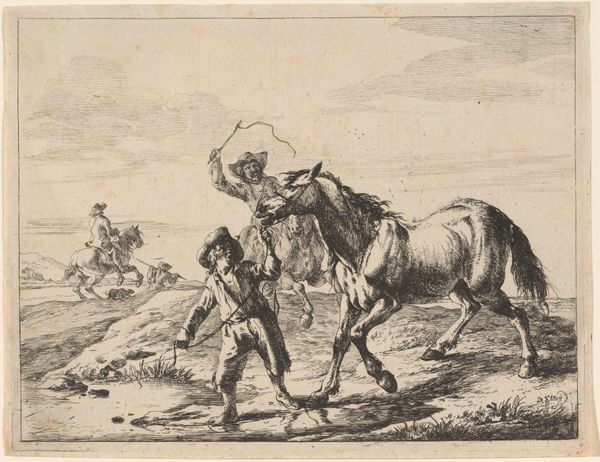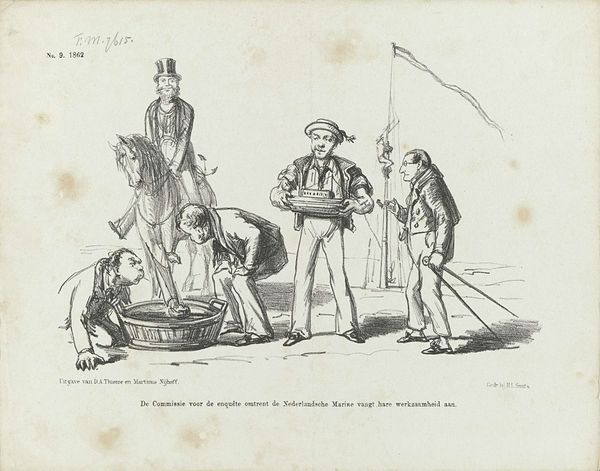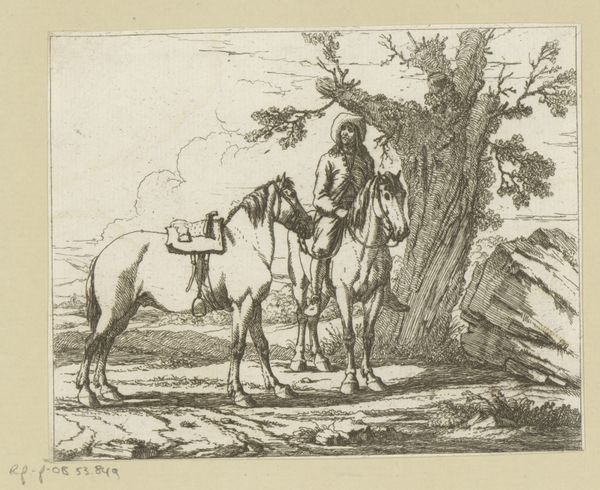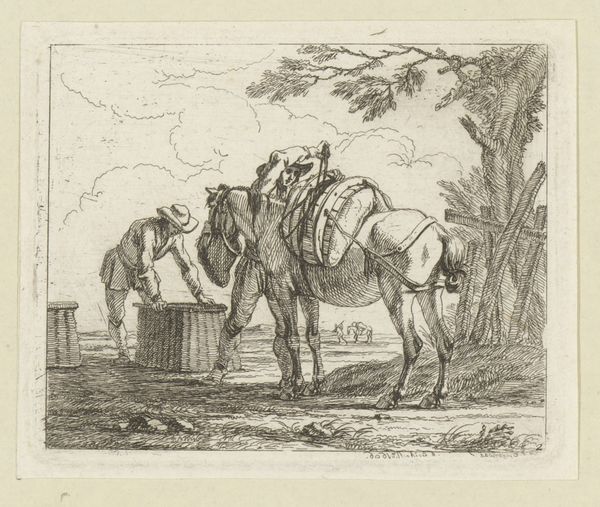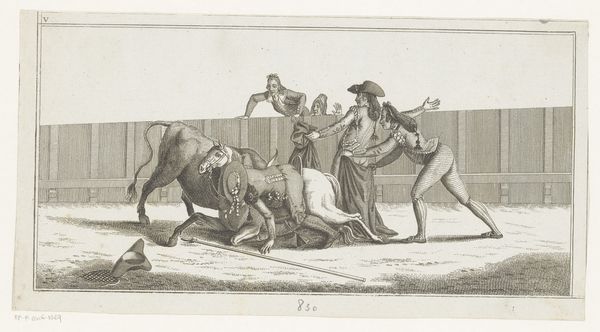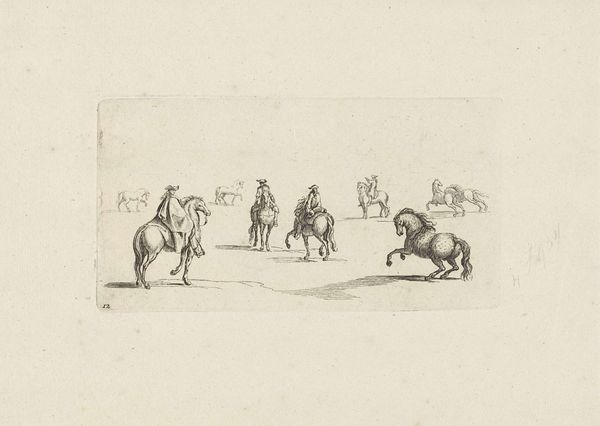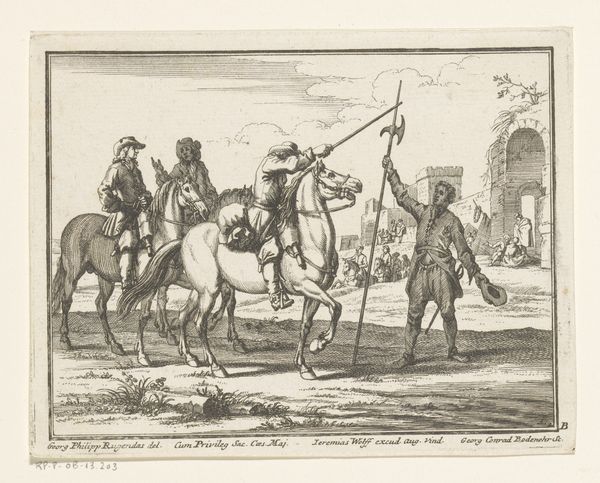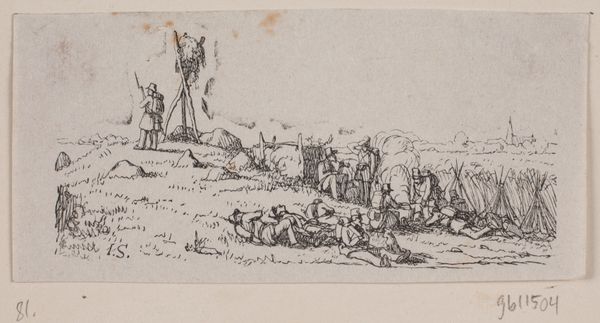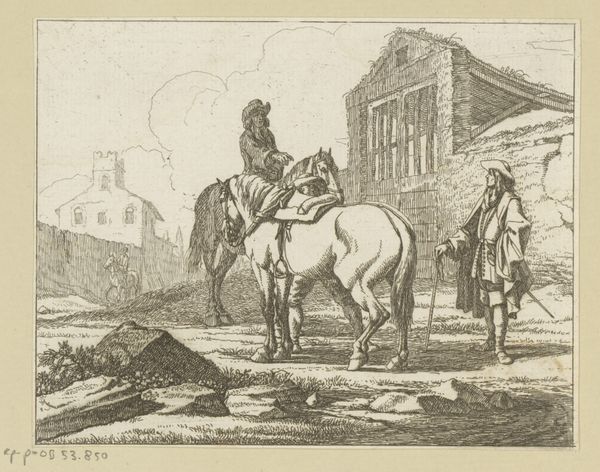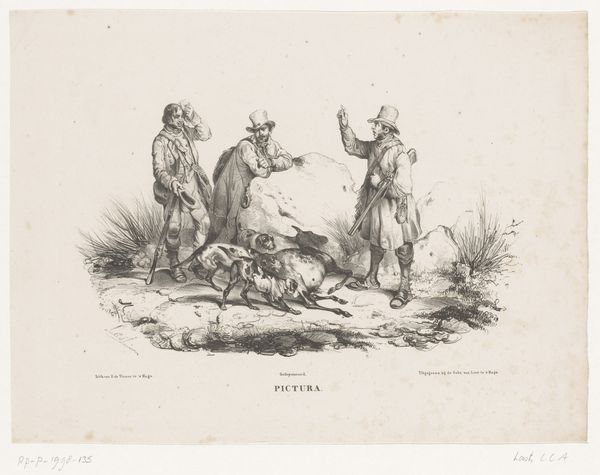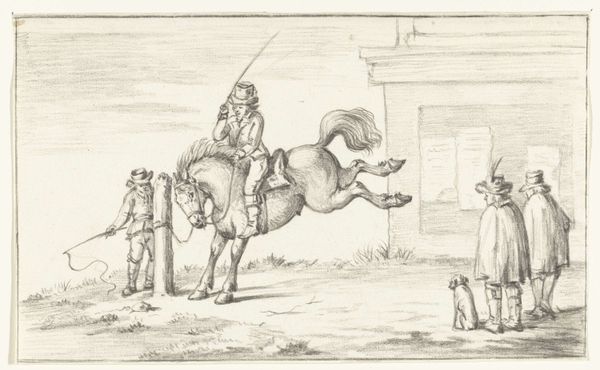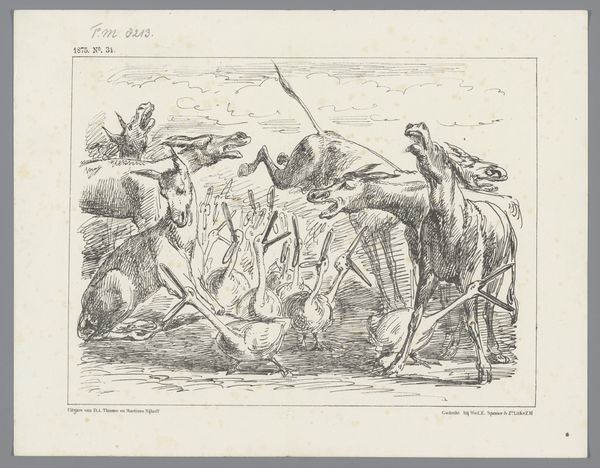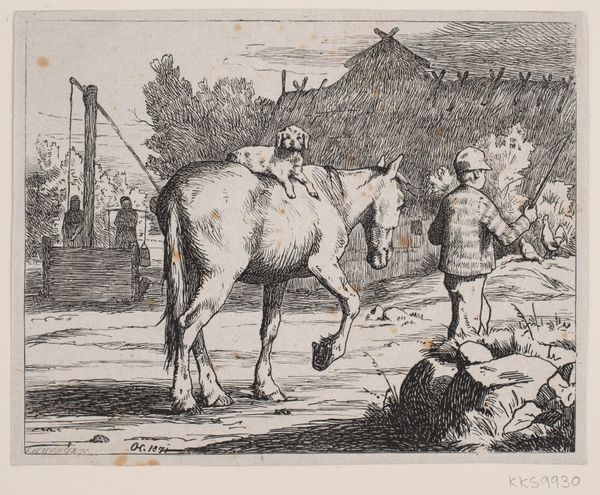
Illustration til "Lille Claus og store Claus" i H.C. Andersen, "Eventyr og Historier", Bind 1 1870 - 1873
0:00
0:00
Dimensions: 73 mm (height) x 96 mm (width) (bladmaal)
Curator: We’re looking at an illustration by H.P. Hansen from 1870-1873, specifically made for Hans Christian Andersen’s “Little Claus and Big Claus.” The medium is ink on paper, a style we often associate with Romanticism. What’s your initial read of this piece? Editor: There's a tangible sense of grief here. The central figure is clearly in distress, possibly over some misfortune involving the fallen horse, while the landscape seems indifferent to his sorrow. The stark ink work adds to the emotional intensity. Curator: Note how Hansen uses line weight to direct our gaze. The heavier lines emphasize the distraught figure of Little Claus and the broken form of the horse, making them the focal points. Then consider the texture achieved through hatching and cross-hatching which defines form. Editor: Absolutely, but let's also think about this illustration in the context of Andersen's tale. This likely depicts a moment of profound loss for Little Claus at the hands of Big Claus. The stoic, almost nonchalant stance of the standing figure suggests power dynamics and class divisions prevalent in 19th-century Denmark. The landscape, far from being neutral, becomes a stage upon which these social dramas unfold. Curator: An excellent point. But also think about the overall compositional structure; the figures are carefully arranged, creating a visual rhythm and a balanced distribution of light and shadow. There is a certain harmony, or at least a studied construction to it, that lends the image its formal integrity. Editor: That order perhaps is deceptive because even if composed, this balance is profoundly unsettling precisely because it masks inequality and violence inherent in the story and society it reflects. Romanticism can be quite conservative by glossing over reality with aesthetics. Curator: While that's a valid critique, one could also argue Hansen uses the visual language of Romanticism to underscore the tragedy inherent in Little Claus’ story. We might say it creates empathy within a specific visual register. Editor: Perhaps, or perhaps it uses beauty to distract from deeper, more systemic issues, a move characteristic of many narrative images during that era. Curator: Regardless, Hansen’s work provides a rich space to explore how art reflects narrative, emotion, and societal complexities. Editor: Yes, and how those visual choices may serve, even inadvertently, to uphold the status quo.
Comments
No comments
Be the first to comment and join the conversation on the ultimate creative platform.
